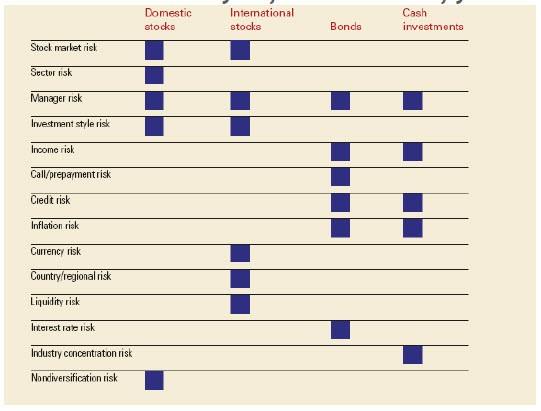Market Volatility Basics of Investment
Post on: 14 Июль, 2015 No Comment

Skip to:
Investor sentiment can be a double-edged sword. On the one hand, strong enthusiasm on the part of investors has helped propel the equities market to unprecedented highs. On the other hand, a sudden shift in sentiment can cause an equally sudden shift in the market’s performance.
Volatility is inevitable. How can you prepare for it?
Volatility Defined
Volatility is commonly used to describe dramatic, short-term fluctuations in a market or individual investments.
Although it can be somewhat unsettling to see the value of your portfolio drop or rise significantly, there are steps you can take to help survive volatile market conditions.
Calm During a Storm
It’s important to keep your perspective during uncertain investment times. First, remember that during uncertain times, the advice of your financial professional becomes even more important.
If your original financial goals are still valid, think carefully before you abandon specific investments because of negative market activity. Remember that you and your financial professional created an investment portfolio based on your risk tolerance, time horizon, and financial goals. Quick, reactionary decisions could prevent you from reaching your goals.
Financial Strategies to Manage Volatility
Time is on your side as an investor, because holding your investments long-term may help to smooth out short-term market volatility. In addition, there are several strategies that can help you manage risk while still keeping your financial goals on track:
- Emphasize Diversification
Diversification means spreading your money across a variety of asset classes: stocks, bonds, and cash equivalents. This strategy also calls for allocating funds among investment vehicles within each class to help manage risk if there is a downturn in any one market.
For example, assume you have purchased stock in a highly speculative software company. The stock’s trading price could fall substantially if a bug is detected in the company’s main product, or if it is inferior to a competitor’s product. Spreading your money across different asset classes like stocks, fixed-income investments, and cash equivalents could help you manage your risk better than investing all of your funds in this one equity.
If you are planning to shift part of your portfolio into fixed-income investments to help manage risk, you may also want to consider laddering these securities. This means you spread the total dollar amount of your investment among fixed-income securities with different maturities.
This strategy is designed to help your fixed-income portfolio perform well in both declining and rising interest-rate environments. If interest rates drop, your portfolio is partially protected against reinvestment risk because only a portion of your assets must be reinvested at the lower rate, while the long-term maturities continue to earn higher rates. If interest rates rise, proceeds are reinvested at new, higher levels as shorter-term maturities come due, thereby improving your portfolio’s return.
This strategy involves investing a specific sum of money at regular intervals (e.g. investing $100 every month). This allows you to buy more shares when prices are low and fewer shares when prices are high. Although dollar cost averaging does not assure a profit or protect against loss in declining markets, this strategy can reduce market timing concerns. However, because such a strategy involves periodic investments, you should consider your financial ability and willingness to continue purchases through periods of low price levels.
Your financial professional can provide you with access to a wealth of information, including timely market analyses by research analysts, economists, and strategists. Reviewing these materials can help you make more informed investment decisions. Your financial professional can also suggest changes to your portfolio that may better meet your financial needs.
Staying on Target
Because market conditions can change rapidly, you and your financial professional should stay in close contact. He or she has the expertise and resources to assist you in choosing investments to help manage risk and keep you on track toward meeting your financial objectives. Also be sure to keep your financial professional abreast of any significant changes in your personal financial circumstances.
Your financial professional is also an excellent resource for providing investment performance history and recognizing new market trends. Do you think you’re too heavily weighted in international or domestic investments because of particularly volatile market events? Contact your financial professional to discuss the potential benefits of reallocation. Do you want to establish a retirement plan or fund a college education? Let a professional offer you strategies based on your income, preferences, and lifestyle.
At your request, your financial professional will commence an in-depth review of your current asset allocation strategy to determine if it is best suited to meet your immediate and long-term financial goals.
While keeping your financial needs and goals in mind, you should regularly examine your portfolio to see if it’s meeting your expectations. With your financial professional’s help, you can see how your portfolio is affected by market trends and cycles, then decide the proper timing for portfolio rebalancing, if necessary.
Market downturns are inevitable, but they needn’t spell disaster if you plan ahead and structure your portfolio and your financial strategy accordingly.














